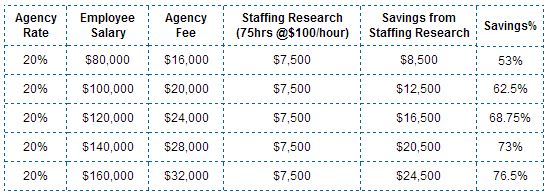“How to cost effectively discover passive/hidden qualified talent”
By John Renouf – Director of Business Development –O’Donnell Staffing Research
Organizations of any size or purpose succeed when they have the right mix of talented individuals to make them distinctive. However, talented individuals are nurtured and protected by their organizations and have little reason to pursue other opportunities. Even in a stressed economy, companies do not release their best employees. It’s the less skilled, less productive employees that become available. Hence, the search for key placements can be a long, expensive, and frustrating process. To fairly and economically overcome the access barrier to new talent and break through the limited choices of standard dotcoms and agencies, there is an alternative strategy.
Highly qualified people are not twittering for new jobs, they are not on the job boards, and they do not respond to passive networking and media ads. A September 2010 survey by LinkedIn and Adler Group found that fully two-thirds of the employed population were content and not looking. People in this category will not know of your opportunity without personal contact, the kind of connecting (not networking) that an approach called ‘staffing research’ provides. The concept of staffing research emerged about fifty years ago to find prime candidates for choice positions, but there was a key difference in its objectives. These prime candidates were not offered to prospective employers; rather, they were turned over to the search firms these employers hired. Search firms would then present the staffing research candidates to their clients and collect a fee for the hire. Back in the 1980’s, at an American Management Association conference in Washington D.C., a Fortune 100 company declared, “We use who the headhunter uses – staffing research”.
Gaining access to the staffing research process that a headhunter uses begins with engaging a staffing research firm. A firm specializing in staffing research directly and aggressively defines, targets, and connects with the qualified applicant pool, with the singular goal of identifying the best qualified applicants for an opening. It is usually the case that, once found, a prime candidate will respond with interest and a willingness to listen to career improvement opportunities. Such a one-on-one approach succeeds exponentially over the old standbys of career fairs and recruitment advertising, and against the tide of new technologies and new perceived recruitment options such as monster.com, ladders.com,
career.builders.com, website postings, social networking, and passive candidate networking.
The process toward gaining access to approximately 90% of the potential candidates from a target industry or geographical area is both expedient and low cost:
- For the research model to be productive, a position will need 75 to 100 hours of staffing research.
- Each assignment begins with a thorough understanding of the prospective employer and its present needs, including position descriptions and compensation parameters.
- The organizations that will have the qualified professional for the position are identified
- The first 25 to 35 hours of the position assignment will be spent generating names for the recruitment pool.
- The next phase, which could encompass 65-75 hours, is direct contact with the targeted professionals, presenting the opportunity via telephone, generating an interest level and obtaining confidential information on their background, compensation, reasons for the candidate’s interest, contact information, and other pertinent information.
- The background information and resume of a targeted candidate is furnished to the prospective employer for its evaluation.
Cost Benefits
A staffing research firm charges an hourly rate for its services, not a fee based on the candidate’s salary. That translates into major savings very quickly. Taking the scenario described above, in which the search for a candidate is completed in about 75 to 100 hours, and assuming an hourly rate of $100, the cost differences are striking:


The productive difference between a 75 hour staffing research project and a 100 hour staffing research project is that a 100 hour project will produce more candidates since a larger recruitment pool is generated and more potential candidates can be contacted and presented your opportunity.
In staffing research:
- Costs are based directly on the time needed for research.
- The middle step is eliminated.
- There is no employer time and expense devoted to screening resumes`.
- Confidentiality is secure on request.
- The client has control over the scope of staffing assignment and the consequent expenditure. The lower cost-per-hire goes to the bottom line.
Other Benefits for the Prospective Employer’s Recruiting Staff
- Every assignment provides fresh, accurate, and up-to-date information on targeted companies and viable candidates.
- Candidates furnished are the best candidates, not an open ended “data dump” nor a prescribed maximum or minimum
With the benefits of an expanded population of candidates, low costs, and truly qualified and desirable recruits, now is the time to rethink staffing strategy. Staffing Research is a win-win approach.
(John Renouf is the former Vice-President of Human Resources at Raytheon Engineers and Constructors. He is currently the Director of Business Development at O’Donnell Staffing Research.)
 O'Donnell Staffing Research
O'Donnell Staffing Research